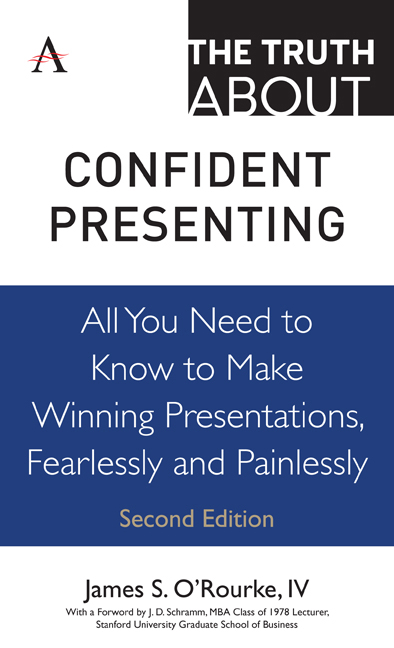 The Truth about Confident Presenting
The Truth about Confident Presenting Book contents
- Frontmatter
- Contents
- Foreword
- Introduction
- Part I Some Initial Truths
- Part II The Truth About Getting Ready to Speak
- Part III The Truth About What Makes People Listen
- Part IV The Truth About Developing Support for Your Presentation
- Part V The Truth About Getting Up to Speak
- Part VI The Truth About Managing Anxiety
- Part VII The Truth About Nonverbal Communication
- Part VIII The Truth About Visual Aids
- Part IX The Truth About Handling an Audience
- Truth 46 Assess the mood of your audience
- Truth 47 Answer the audience's questions
- Truth 48 Handle hostility with confidence
- Part X The Truth About What Makes a Presentation Work
- References
- Acknowledgments
- About the Author
Truth 46 - Assess the mood of your audience
from Part IX - The Truth About Handling an Audience
- Frontmatter
- Contents
- Foreword
- Introduction
- Part I Some Initial Truths
- Part II The Truth About Getting Ready to Speak
- Part III The Truth About What Makes People Listen
- Part IV The Truth About Developing Support for Your Presentation
- Part V The Truth About Getting Up to Speak
- Part VI The Truth About Managing Anxiety
- Part VII The Truth About Nonverbal Communication
- Part VIII The Truth About Visual Aids
- Part IX The Truth About Handling an Audience
- Truth 46 Assess the mood of your audience
- Truth 47 Answer the audience's questions
- Truth 48 Handle hostility with confidence
- Part X The Truth About What Makes a Presentation Work
- References
- Acknowledgments
- About the Author
Summary
As you know by now, one of the keys to prepare for a presentation is to learn all you can about your prospective audience. Two things you most want to know about your audience are what they know about the topic of your talk and how they feel about it.
Here are a few ideas for assessing their likely reaction to what you have to say:
Research your audience in advance. Knowing who they are and what they believe can help you win them over and keep you from making serious errors along the way. Colin Quinn, the comedian from Saturday Night Live, recently spoke to a distinguished society of senior public relations and communications professionals at their annual spring meeting in New York. Without any prior research on the group he was speaking to, Quinn stood up after dinner and used his customary night club act on the crowd. Not only was the material inappropriate for the audience and occasion, he also insulted the public relations profession several times. Several attendees asked afterward if the society could get its money back from the comedian.
Look online, talk to people in the group you're going to address and find out what their values are; look for ways to connect your message to the principles and ideals of the people in your audience.
Talk to those who invited you to speak. The people likely to be most helpful in your research are those who asked you to address this group. Find out the particular purpose of their meeting, why they selected you as a speaker, and what they expect from your talk. Ask about previous speakers and the topics of their presentations. Find out if the group had strong reactions— positive or negative— to other speakers and plan your remarks accordingly.
Meet with people as they enter the room. You should arrive early before giving a talk and get to know the presentation venue. That's also an opportunity for you to meet people as they enter the room, 46 introduce yourself and get to know something about them. Knowing a little bit more about their experience, interests and expectations can help to humanize you and make you seem more personal to an important segment of the audience.
- Type
- Chapter
- Information
- The Truth about Confident PresentingAll You Need To Know To Make Winning Presentations, Fearlessly And Painlessly, pp. 183 - 186Publisher: Anthem PressPrint publication year: 2019


